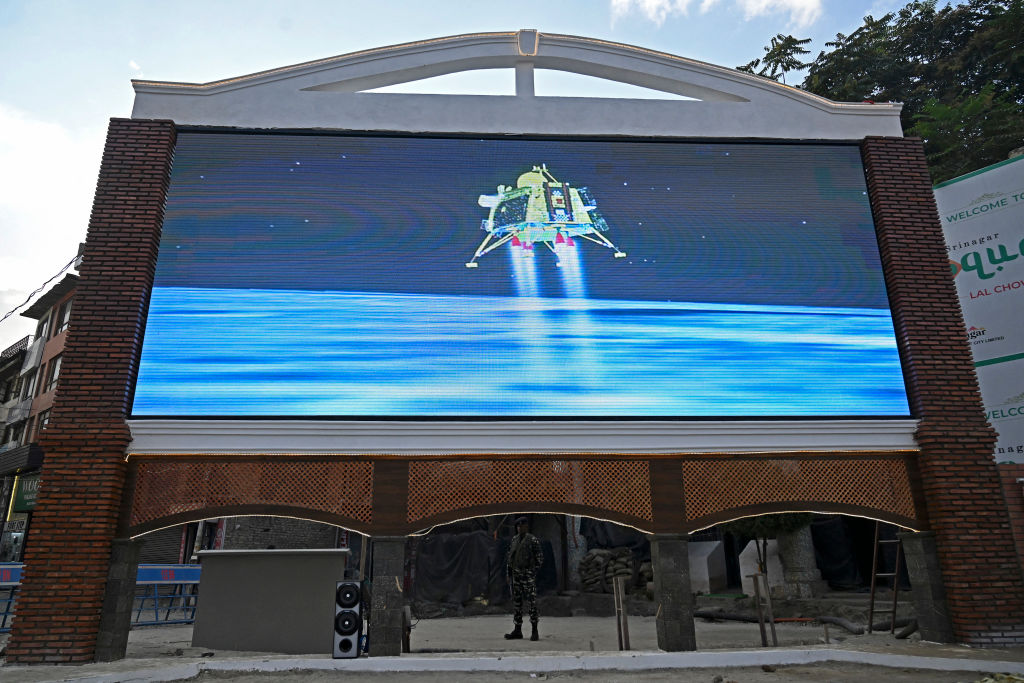
History was made this week when India made the first-ever landing on the moon’s south pole.
A 26-kilogram rover called Pragyan (‘wisdom’) arrived in lunar orbit aboard India’s Chandrayaan-3 spacecraft and was carried to the surface on its Vikram lander. This makes India the fourth nation to land on the lunar surface after the United States, the former Soviet Union and China. An attempt by Russia to land its Luna 25 probe in the same region earlier in the week failed when the spacecraft lost communications with earth and crashed onto the moon.
The global politics of this are important. India has succeeded where Russia has failed, and the benefit of India’s participation in international space cooperation cannot be ignored, in contrast to Russia’s growing isolation due to its war on Ukraine. Russia has signed an agreement with China to establish the proposed international lunar research station at the moon’s south pole. But if Moscow can’t deliver payloads, its reliability in supporting Beijing’s ambitions on and around the moon becomes questionable.
For India, this triumph as a rising space power also reinforces the importance of international space cooperation. The success of Chandrayaan-3 has demonstrated India’s technological prowess. It has established the basis for future missions, including additional Chandrayaan probes to the moon and eventually Indian astronauts landing there. India has signed the US Artemis Accords, and NASA and the Indian Space Research Organisation have agreed on a joint US–Indian mission to the International Space Station in 2024.
Other states are poised to follow in India’s footsteps. The Japanese Aerospace Exploration Agency is set to launch SLIM, its ‘smart lander for investigating moon’, on 27 August to demonstrate high-precision landing techniques using small, lightweight probes. Australia remains on course to send the ‘G’day Moon’ rover developed by the AROSE consortium, which comprises Australian companies Fugro and Nova Systems. There are also plans to deploy a constellation of satellites into lunar orbit with the Seven Sisters initiative by Fleet Space Technologies.
The importance of the moon—and, more broadly, cislunar space (the region between earth orbit and the moon)—cannot be overstated in terms of opening up the high frontier for human activities. A key mission of Chandrayaan-3 is to hunt for water-ice in the lunar soil by analysing the chemical and mineral composition of the surface around the lander. Although it won’t give a definitive assessment of the amount of water-ice at the lunar south pole, confirming the substance’s presence will be crucial. Follow-on missions by India, and others, will be needed to determine the quantity and accessibility of such water.
If the water volume is significant and accessible, it could be extracted and processed into oxygen to support a permanent human presence on lunar bases. Hydrogen and oxygen could also be used for rocket fuel for travel deeper into the solar system.
Being able to use lunar resources to ‘live off the land’ would fundamentally change the economics and business case for human exploration of the moon and would significantly lower the cost of sustaining a permanent human presence there compared to the short visits during the Apollo program.
In turn, a permanent human presence on the lunar surface, particularly in the south polar region, could use the water-ice and uninterrupted solar energy for resource exploitation. Mining the moon for precision metals could open up the possibility of space-based manufacturing, on the surface and in cislunar space, which would establish the basis of a space-based economy.
Currently, launch vehicles taking payloads into orbit from earth use a great deal of energy to climb out of the earth’s deep gravity well at considerable financial cost. The much-reduced gravity on the moon—one-sixth that of earth—offers dramatic advantages for space launches.
That cost–energy advantage is enhanced further if spacecraft can also exploit lunar ice processed into rocket fuel, and if space resources can be used in manufacturing on the moon.
That could extend even to manufacturing spacecraft. The moon could become a launch site for spacecraft operating between cislunar space and earth orbit and is a natural stepping-stone for deep-space exploration to Mars and beyond. In this way, human activity in space would become moon-centric and embrace an entirely new business model for space exploration. Add in the low-cost reusable launch capabilities that could operate either from earth or the moon, and space exploration costs fall away considerably.
With such a dramatic reduction in cost, it becomes practical to consider much more ambitious space activities, including the construction of large structures such as solar power satellites that could help address the earth’s looming challenge with climate change. This will be a long journey, but Chandrayaan-3 has made a bold step towards a golden age in space exploration for humanity.

